Jacopo Larcher repeats Rhapsody in Scotland

 1 / 43
1 / 43 Riky Felderer / The North Face
Riky Felderer / The North Face
Two Saturdays ago the South Tyrolean climber Jacopo Larcher clinched the fifth ascent of Rhapsody, the difficult trad climb at Dumbarton Rock in Scotland freed by Dave MacLeod in 2006. With its E11 grade - the most difficult in the British trad system - the route heralded a new era of difficulties in Great Britain. Confirmation of its complexity can be seen in the fact that in the last decade, Rhapsody has only been repeated by the Canada’s Sonnie Trotter and the Englishmen Steve McClure and James Pearson.
Larcher worked the line for 9 days before adding his name to this small list of trad experts and his success came about after an important sports climbing background - read 9a redpoint at Siurana and 8b+ onsight at Montsant - led to a turning point, or evolution as he himself defines it, which made him seek out big routes worldwide and, of course, delve into trad climbing. Highlights of the latter include repeats of Prinzip Hoffnung and Psychogramm at Bürser Platte in Austria, as well as the first free trad ascent of the 8c climb Lapoterapia at Osso in 2015. All these climbs channeled the climber from Bolzano, inexorably, to Scotland and directly to the base of the route that, after having seen it in a video ten years ago, had evidently left its mark.
Congratulations Jacopo! Seems like it was a good fight ...
Thank you! Yes, the weather was pretty full-on during the last days. I wouldn’t define it a great battle against the actual route, but more against the weather. The first days were very cold and windy (5°C, with winds up to 60km/h) ... the friction was fantastic, but I had to climb with the duvet jacket on. I only managed to do one or two toprope laps before fleeing back home. Fortunately after a few rest days the temperatures rose and the climbing became more pleasant :-) Overall though I think we were very lucky with the weather!
Presumably you traveled to Scotland just for this route, right?
That's correct, the main goal of the trip was Rhapsody. E11 was one of the first climbing films I'd seen; I remember at that time it seemed completely crazy, absolutely incomprehensible... For me it was something unimaginable. I never thought that one day I’d go an try it. Let alone repeat it!
Yet
In recent years I started to concentrate more on trad climbing, and I’ve learned to appreciate this style. Despite the various controversies about the nature of this particular route, Rhapsody for me has come to represent the epitome of trad climbing. It’s a reference point and I was curious to see and try it. I wanted to repeat it to have a yardstick to measure myself against... and to make another little dream come true:-)
So what did you expect?
Honestly speaking I expected more rain, but in the end - apart from the initial arctic temperatures - we were lucky indeed! The crag positively surprised me, too; there are many other great climbs such as Chemin de Fer, Requiem, Achemine. The place is very "urban" ... there is a nice community of climbers, but there’s also plenty of rubbish and degradation!
How much did you risk? Although it’s a trad climb with long whippers, these are relatively "safe", right?
The route is about 25 meters long and starts at a small ledge, 15 meters above the ground, easily accessible by other routes. The first part (shared with Requiem) is very safe, a 15m crack that finishes with a big jug… the last rest and start of the difficulties. After placing the last piece of gear, a good small nut (# 3 BD), you have to make a 10m run-out to reach the lip of the crag. The last meters happen to be the crux of the route. Two very dodgy shoulder moves that had me peeling off 6 times!
With a massive fall!
The fall is really long, but you don’t risk hitting the deck. I wasn’t worried about the gear failing, despite only taking 5kN; my biggest fear was falling with the rope caught behind my leg and hitting the starting ledge. If you mess up the last move, you end up a few meters below the start of the route!
In the end, what was the key to success?
Persistance :-)
Tell us about the style you adopted?
After climbing the first section, I abseiled down the line to clean it and try the moves on top-rope. I worked the route on top rope for a few days (it really was cold so I only managed to try the route 1 -2 times a day), and as soon as the weather improved I started my first attempts from below. I fell off the same last hard move 6 times, changed the sequence and managed the send... obviously placing all the gear as I climbed. Given the past controversy (about where to exit the route, Editor’s note) I decided to top out as Dave had done, without avoiding the last three moves and exiting onto the arete. It’s fairly strange… but since but since I knew the rules, I wanted to play the game ;-)
Can this style be improved on?
Obviously yes! Apart from an on-sight or flash, I think a "cleaner" method would be "ground-up". The first part isn’t dangerous, so this climb lends itself to being attempted in this style. It’s no secret: my dream initially had been to try it like this but in the end, for various reasons I chose to toprope it instead. I'm happy with my decision, because otherwise I might have had to move to Dumbarton for few months or years even! It’s something for the next generation!
Earlier on you mentioned Requiem, a cult trad climb for the Brits, established in 1983. Any thoughts?
I'm still asking myself how Dave Cuthberston managed to climb it back then! It's a magnificent route: the logical line up the face. Had it been in Italy, it would most certainly have been bolted…
Which leads to the next question: now you've climbed several difficult routes in this style, from Bürs to Osso, what are your thoughts about this style of climbing?
Trad climbing is definitely what attracts and motivates me most at the moment. I enjoy its diversity. Some climbs are more dangerous, other less... some climbers seek out pure difficulty in their first ascents, others are spurred on by the natural beauty of a line. My dream is to combine these two aspects. I don't particularly like the idea of restraining a line in order for it to get a certain grade…but maybe that’s because I come from a country where there is much more rock :-)
Are there any other routes in particular you’re interested in?
I'd love to go to Pembroke in Wales, and also try some climbs in the Peak District in England (Meshuga, End of the Affair, Gaia, Equilibrium, Braile Trail, Appointment with Death). Most of all though what I’m drawn to is a project at Cadarese, but maybe it’s too hard and dangerous ... time will tell.
In the meantime you celebrated twice, Barbara also sent her project ...
Yes! Babsi (Barbara Zangerl ed) managed to make the first (fast) repeat of Scotland’s first E9, Achemine. The route was climbed in 2001 by Dave MacLeod and remained unrepeated for 15 years!
Tell the truth, what was it like belaying her?
There’s no hiding the fact that I often get more stressed out belaying Babsi than when I myself am doing the climbing. Not because I don’t trust her, but because I hope she can send her project. Obviously if the climb is dangerous everything changes, since I get worried she might hurt herself. The falls on Achemine are long, but fortunately they aren’t dangerous: the pro is really good.
Talking about celebrations, this year you weren’t at Melloblocco, but seeing how some of your friends celebrated your ascent, in many ways it was almost as if you were there with them!
Yeah, unfortunately this year we had to skip the Melloblocco... but for a good reason!
And now?
Now I want to spend the summer in the Alps, before returning to Yosemite in autumn. I want to climb something bigger, and also take a closer look at that "famous" project at Cadarese!
| Expo.Planetmountain | |
| La Sportiva | |
| The North Face | |
| www | |
| FB Riky Felderer | |
| rikyfelderer.com | |
| jacopo-larcher.com | |
| FB Jacopo Larcher | |



 Copia link
Copia link










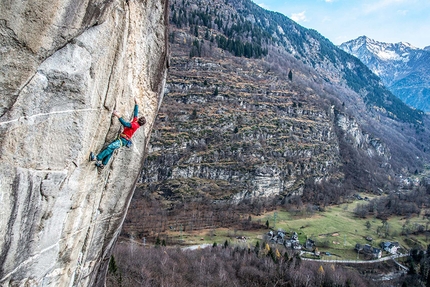
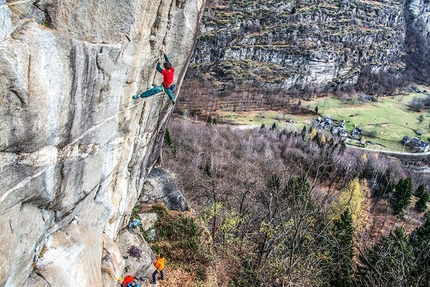
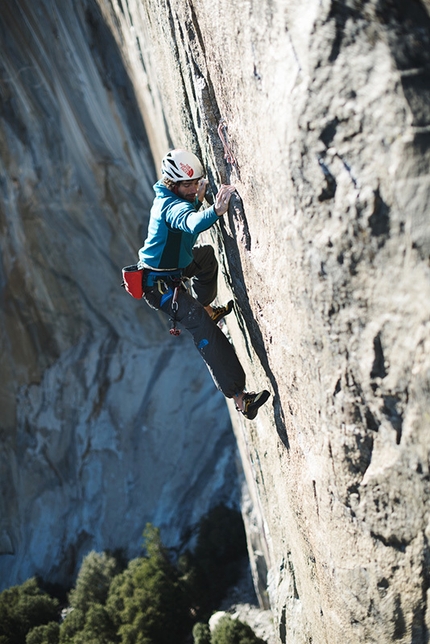

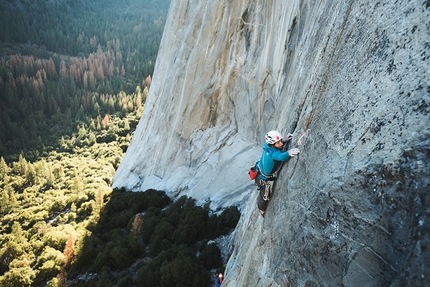

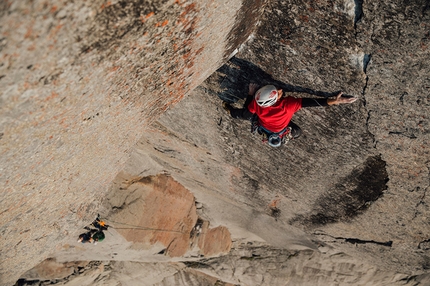


 See all photos
See all photos






















